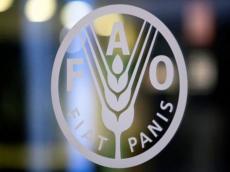Today.Az » World news » FAO outlines strategy for healthy and productive livestock in Europe, Central Asia
27 February 2021 [12:00] - Today.Az

By Trend
With the main aim to improve the animal health and production practices of smallholders and reduce the threat of antimicrobial resistance, FAO published an animal health and production strategy for Europe and Central Asia, Trend reports on Feb. 26 referring to the Food and Agriculture Organization of the United Nations (FAO) in Azerbaijan. “The strategy, covering the period of 2020–2025, presents FAO’s work in the region in three main priority areas – animal health, animal production, and antimicrobial resistance (AMR) – along with seven cross-cutting issues, among them gender, environmental sustainability, community farming as a business, and coordination with other international organizations,” FAO said. As a critical step for animal health, the strategy helps countries in the region apply the One Health approach to clearly understand which disease or diseases have a major economic and public health importance. The blueprint also advocates more strongly for involving veterinary services, farmers, and other players along the value chain, as well as for the enhanced use of innovation technology, such as “smart” farming and digital animal monitoring. Livestock production depends on many factors, including the quality of feeding, animal health, genetic potential, and farming practices. To this end, the strategy describes the primary aspects of FAO’s related work in the region, particularly feeding and the key factors involved: sustainable pasture management, main feeding resources, reducing feed waste, improving feed quality such as hay and silage, and the importance of taking advantage of crop residues and agroindustry by-products. With respect to cattle breeding, the document outlines the support to dairy production for small and medium farmers, artificial insemination, the National Animal Identification and Traceability System, and performance-recording. Given the richness of the region with respect to indigenous livestock breeds, the strategy presents opportunities for their conservation to capitalize on their local traits, such as disease resistance, as an added value to increase productivity. The document points at the importance of developing small ruminant production, family poultry farming, and apiculture for increased production efficiency and sustainability, as well as to enhance child nutrition, women’s income-generating potential, and ecosystem services. Antimicrobial resistance is one of the greatest challenges of our times that’s also closely interlinked with the livestock sector. In this regard, the new regional livestock strategy blends in with the global fight against AMR, foreseeing awareness raising, better surveillance, monitoring, and strengthened governance of antimicrobial resistance and use in food and agriculture, in addition to promoting good practices that reduce the need for using antimicrobials. “The proper use of antimicrobials and antimicrobial resistance are not well established concepts in most countries across Eastern Europe and Central Asia, and capacities to prevent, control, and reduce the related risks are very limited,” said Eran Raizman, FAO senior animal health officer. “In almost all countries, antimicrobials for livestock are sold without a certified veterinary prescription; this is one reason why ensuring more visibility and training on this issue became part of the strategy.” Through the improvement of animal health and productivity, while reducing the threat of AMR under the One Health approach, the strategy supports the realization of the United Nation Sustainable Development Goals. “FAO’s development work should start today with a fresh vision of more resilient systems for the next five years and beyond,” emphasized Vladimir Rakhmanin, FAO Assistant Director-General and Regional Representative for Europe and Central Asia, in the strategy’s foreword.
|